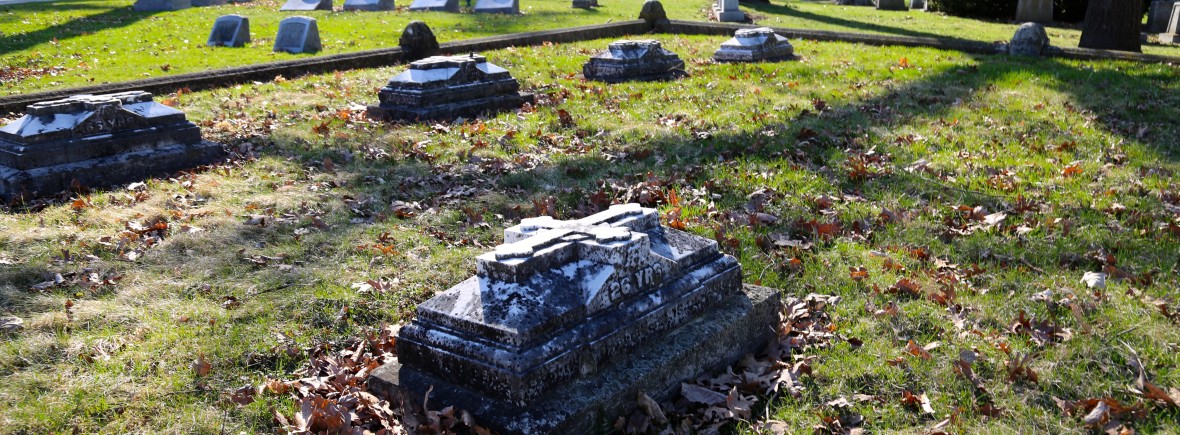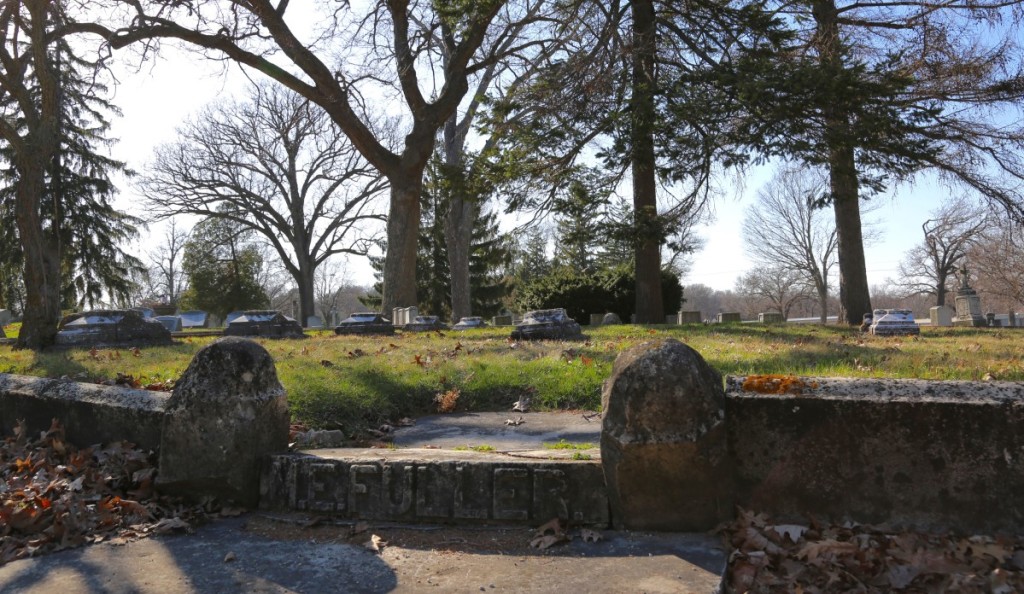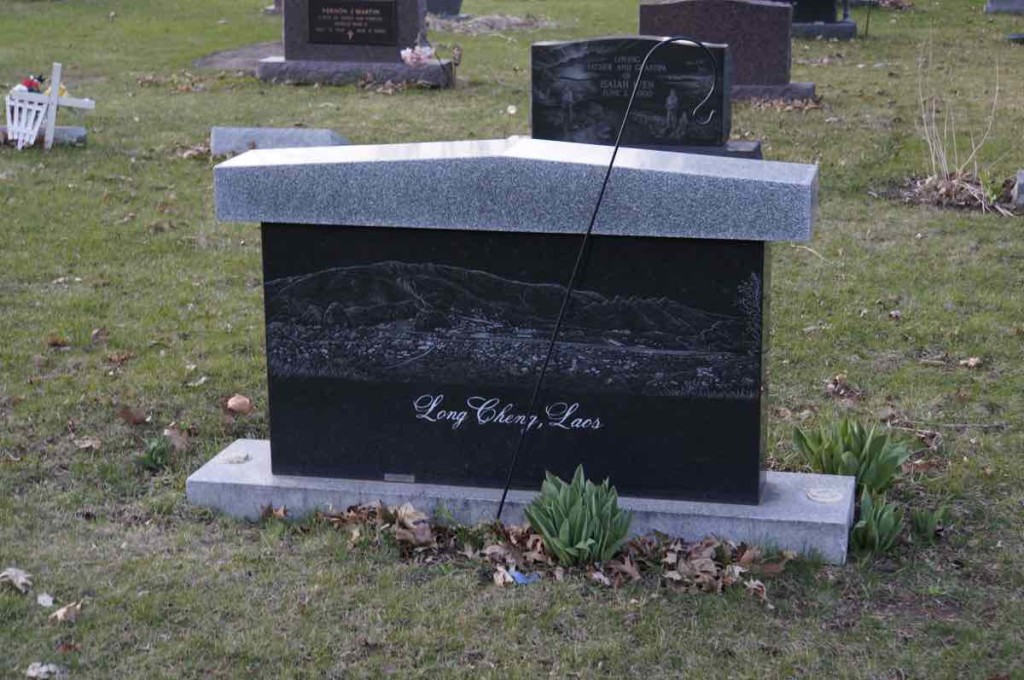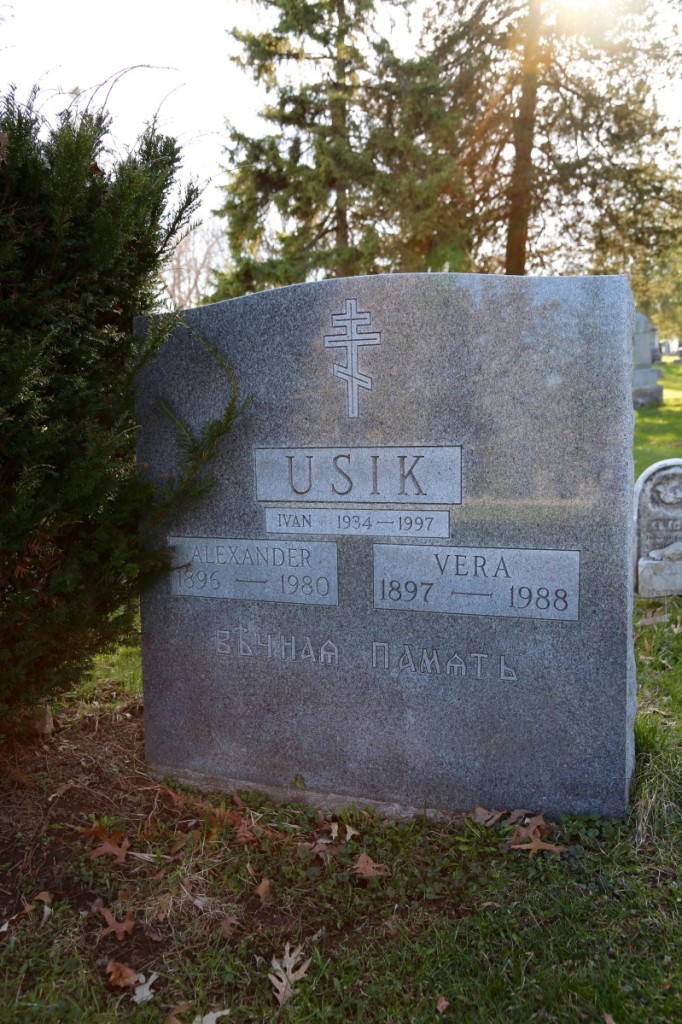Inherited
There are a number of ways that clues to inherited identity may be inscribed on a gravestone. These forms of identity—including ethnic, cultural, and familial—often overlap and incorporate symbols from many other sections of this website, but contextualize those symbols with the depth of shared histories that characterizes inherited identity.
FAMILY
The most intimate boundaries of inherited community are found in the markers of family plots. Individual stones are often carved with only minimal biographical information of name, birth and death dates, sometimes only a first name. A larger family monument nearby frequently supplements the succinctness of the inscriptions on these stones. There are numerous monuments scattered throughout Forest Hill that, towering over the smaller individual stones neighboring them, are inscribed with the family surname in a large, bold, font that proclaims the family’s prestige. In these plots the details of the individuals’ identities are encompassed by that of the family.
The prevalence of the large family plots has diminished with time. Investment in a family plot and monument assumes that descendants will marry, live and work within a close proximity to the family unit, an assumption that has become riskier since the latter half of the twentieth century as it has become far more common for families to spread out geographically.

Ethnic and Cultural
Of all the forms of inherited identity that can be communicated through a gravestone , cultural and ethnic identities are perhaps the most diverse in their expression. In addition to the many symbols that signify a specific culture or heritage, there are communities that express identity through the sheer variety of imagery on their stones.
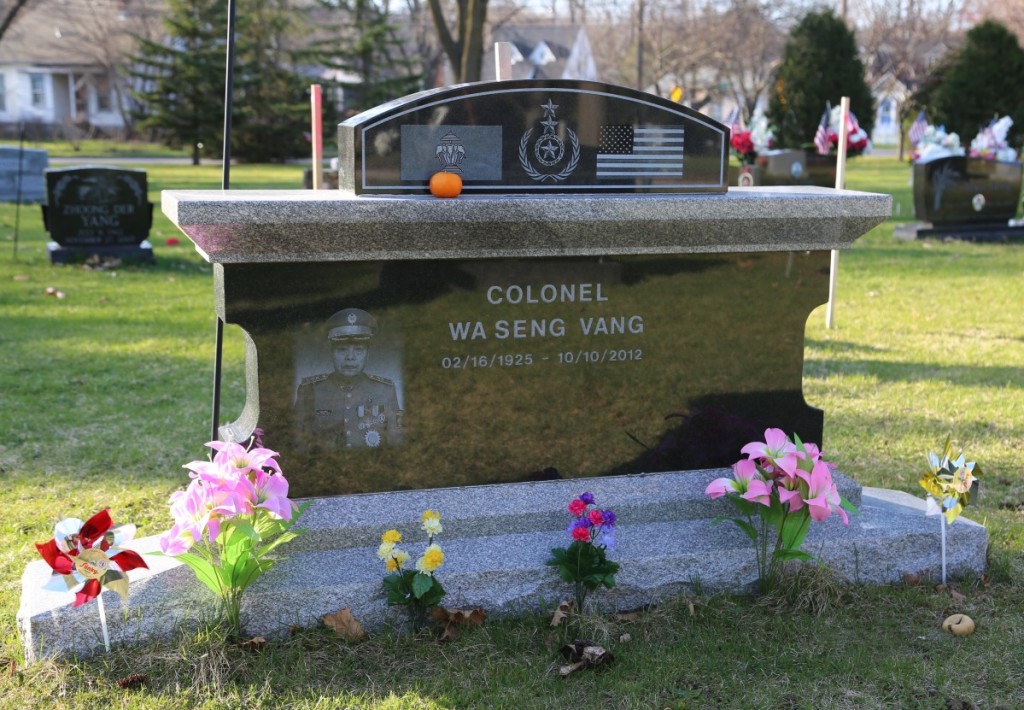
Gravestone of Colonel Wa Seng Vang bearing his portrait beneath depictions of flags of The Kingdom of Laos and The United States. Photo by Helen J Bullard.
There are a large number of Hmong graves in Forest Hill that exemplify the creative expressive capacity of stones. Though the practice of marking burial plots with headstones is not traditional to the Asian roots of Hmong people, Hmong-American communities have adopted the stone monuments and developed their own distinctive visual vocabulary.
The most immediately evident way to recognize a Hmong grave is by spotting the assortment of gifts, food, and beverages left on and around the (very often polished black granite) headstone by those close to the deceased.
Hmong graves often feature portraits of the deceased, which may be either sandblasted into the stone, or affixed in full color to the front of the stone. Though there is vast variety of other personalized expressions to be found on Hmong graves, large depictions of landscapes are a popular motif.
Recognition of Hmong-American gravestone practices has tellingly made an impact on the memorial industry. Katzman Monument Company LLC, a Minneapolis based memorial stone company, appeals specifically to Hmong traditions with a designated page on their website that begins, “Katzman is familiar with Hmong culture. As such, Katzman offers a wide selection of symbols and granites unique to the traditions of Hmong people.” The page goes on to acknowledge the popularity of personalized imagery to Hmong customers, stating that “Katzman also recognizes that images of your loved ones on the face of the monument are a wonderful way to memorialize the decedent.”
Some other visible expressions of cultural and ethnic identity can be discerned in the symbols of Jewish and Eastern Orthodox gravestones. Though these identifying symbols signify the particular religion or faith of the deceased, they also indicate communities of ethnic diaspora, whose dominant religions have deep cultural roots.
The three barred Orthodox Cross symbolizes the Eastern Orthodox faith, but it also often signals Slavic heritage.
Back to Top | Symbols Main Page | Individual | Sacred | Collective |
